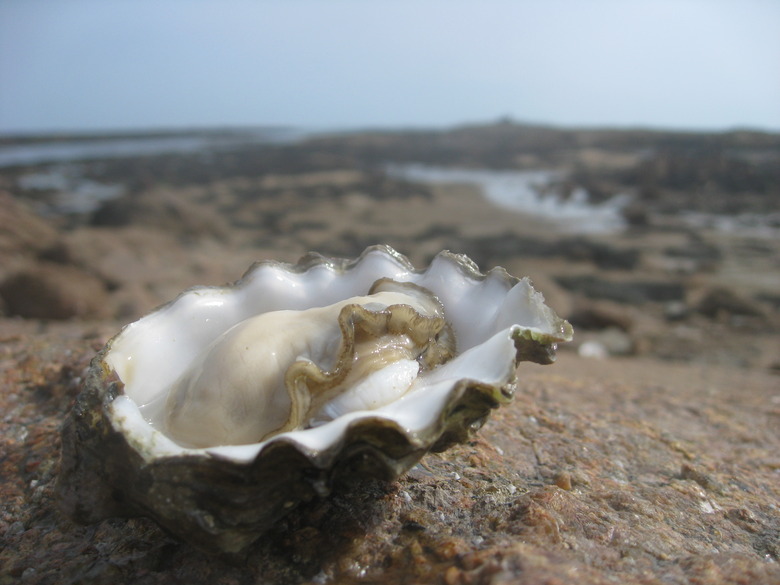How Do Oysters Reproduce?
Oyster reproduction is vastly different from human procreation. The way in which oysters come into the world and then go on to produce more oysters is a fascinating glimpse into the ever-evolving life cycle of an oyster.
TL;DR (Too Long; Didn't Read)
Oysters release sperm and eggs into the water, which form into larvae and mature for one year before beginning the process over again.
Protandric Creatures
Protandric Creatures
Most oysters do not have a fixed sex that stays with them throughout the course of their life. Instead, they are protandric animals, meaning that they can change from male to female over the course of a lifetime.
Often, their reproductive organs contain both eggs and sperm. After reaching maturation, a process that takes one year, oysters usually release sperm. A few years later, after building up the necessary energy reserves, their reproductive organs start to release eggs.
Spawning
Spawning
Oyster spawning season usually begins when water temperatures reach about 68 degrees Fahrenheit. Since oysters are found everywhere from Chesapeake Bay to Japan's Hokkaido Island, and several different types of oysters exist, spawning dates are different throughout the world. In the northeastern United States, it usually occurs anywhere from the end of June to mid-August.
During this time, a single oyster can jump-start the spawning process by releasing its sperm into the nearby water. Once it does, surrounding oysters begin to do the same. Following the sperm release, older oysters begin to release their eggs into the same water. Sometimes, a single oyster can create hundreds of millions of eggs during one reproductive cycle. Releasing those eggs is a far more energy-consuming process than simply releasing sperm, which is why an oyster usually must mature for more than a year before its reproductive organs can handle the task.
Depending on the type of oyster and the type of area in which they live, the sheer amount of sperm and eggs released can give the surrounding water a milky quality.
The appearance of the oyster will also change during this process. Before spawning, its body is opaque, but during reproduction it often looks clear or milky and practically translucent. As long as an oyster has been handled and refrigerated properly, it won't hurt you to eat an oyster that is going through the spawning process. But most people think fresh oysters are tastiest during months when they're not spawning.
Baby Oysters
Baby Oysters
Spawning takes a lot of energy out of the animals, but for many types of oysters, it's the last work they have to do as parents until the process starts again the next year. Once their sperm and eggs are released into the water, they meet to fertilize in the water and develop into larvae.
Those larvae take about six hours to develop, and then another few weeks to find an appropriate place to settle. That location is often a hard structure such as another oyster's shell or a rocky seafloor habitat. During this stage of their life, they're referred to as spat. After one year of maturation, they're ready to begin their own spawning process and start the reproduction cycle all over again.
Cite This Article
MLA
Dragani, Rachelle. "How Do Oysters Reproduce?" sciencing.com, https://www.sciencing.com/do-oysters-reproduce-5171373/. 2 May 2018.
APA
Dragani, Rachelle. (2018, May 2). How Do Oysters Reproduce?. sciencing.com. Retrieved from https://www.sciencing.com/do-oysters-reproduce-5171373/
Chicago
Dragani, Rachelle. How Do Oysters Reproduce? last modified March 24, 2022. https://www.sciencing.com/do-oysters-reproduce-5171373/
